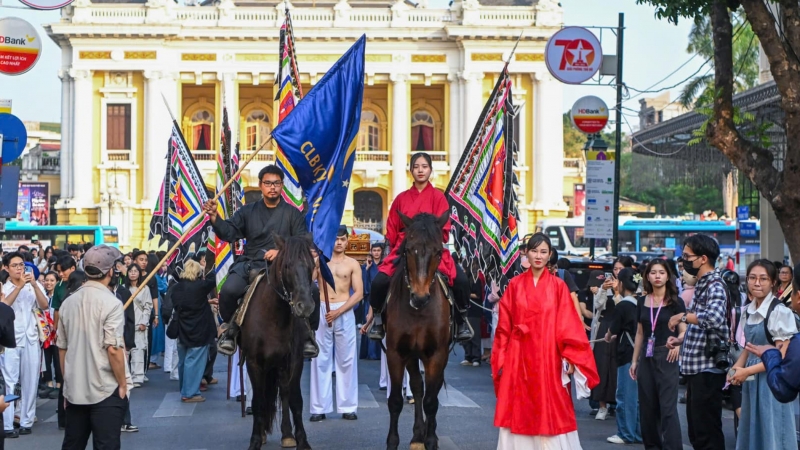"Writing poems on blank paper, I attached a green stork
Sent to visit a friend with your name in it"
The folk song of the Southern region of the Six Provinces tells the story of the ancient journey of stamps. Since the first post office in Vietnam opened in Saigon in 1859, stamps have been an indispensable part of correspondence. In the past, stamps were used to send letters, to inform people about events that had happened, or what the country had achieved. Interspersed with stamps about people, animals, nature, etc.
Each stamp, a historical milestone
In the past, transportation and travel were still difficult, so the need to visit relatives far away of people across the country was replaced by the form of letters and messages, from North to South, from South to North.
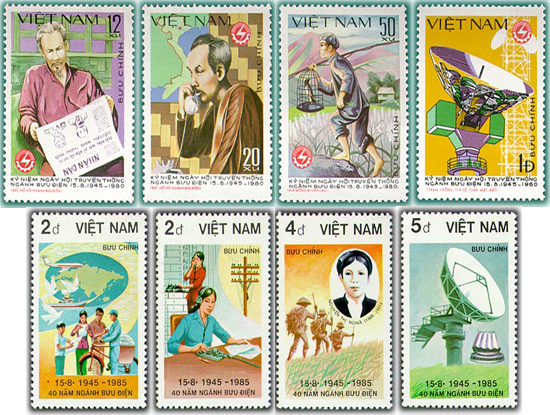
When the post office still held the upper hand in delivering and transmitting information, early postage stamps often attracted collectors.
In those days, for families with relatives who were far away or who had been separated for a long time, it was indispensable to occasionally write letters to each other. Therefore, the post office became a gathering place for everyone. People went there to buy stamps, send letters, or even ask for letters to be written for them. And there were also the love letters, each word carefully written with passionate words of love, sent and then wearily waiting for the letter to come back.
The image of each stamp on the corner of the envelope is indispensable. Depending on the weight of the envelope, you must buy a stamp with a price corresponding to the postage of that envelope. The price of each stamp is the postage. Therefore, the content of the stamp is always appropriate to the social situation.
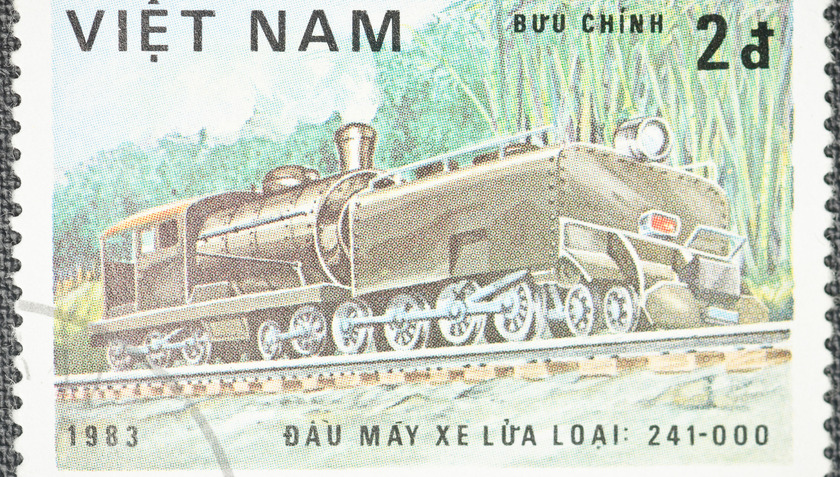
Many opinions say that postage stamps followed the French to Vietnam (right after landing at Da Nang port on August 31, 1858), but there are also some opinions that they were brought to Hoi An by Dutch and Portuguese sailors and traders.
On September 2, 1945, the Democratic Republic of Vietnam was born. Right from the first days, when the revolutionary government was still young, in order to carry out the urgent political tasks of our Party and State, the Vietnamese post office was allowed by the Government to overprint 53 Indochina stamps, creating 57 Vietnamese stamps for temporary use. Some overprinted stamps with the titles "Democratic Republic of Vietnam", "Independence, Freedom, Happiness", "Postage", "National Defense", "Famine Relief", "People's Livelihood"... were the first postage stamps of the revolutionary government.

It is very difficult to count the number of stamp sets and stamps issued on the first day of Vietnam. Currently, there are no consistent figures.
Three months after all work had been stabilized, the Vietnam Revolutionary Post proposed the printing and issuance of new official stamps of the Democratic Republic of Vietnam. On the occasion of the first anniversary of the August Revolution (August 19, 1945) and the founding day of the Democratic Republic of Vietnam (September 2, 1945), on August 27, 1946, the President of the Government signed Decree No. 172/SL to issue the first set of postage stamps bearing the national name of Vietnam with a portrait of President Ho Chi Minh.

The stamps were printed using typographical techniques from wooden blocks, printed at the Ministry of Finance, and located at the Provisional Government of the Northern Region.
The person who had the honor of drawing the first stamp design was the late artist Nguyen Sang. He focused his talent on drawing a portrait of President Ho Chi Minh, meeting the requirements of postage stamps: detailed, characteristic and highly accurate, true to graphic quality, suitable for the difficult and deprived printing conditions of the early days of the country's founding. This is the first set of stamps of the revolutionary State, issued domestically and worldwide, with historical significance associated with the history of the Vietnamese revolution. The issuance of the first set of postage stamps bearing the name of Vietnam marked an important milestone on the path of independent development of Vietnamese revolutionary postage stamps. These stamps have been and will forever be historical "witnesses" recording the glorious victories of the revolution, contributing to establishing the sovereignty of the Fatherland.
It's not just stamps, it's history and culture.
At that time, the hobby of collecting stamps in the world and in Vietnam was always considered a noble and elegant hobby. This hobby attracted and gathered all kinds of people and all ages. The hobby of collecting stamps became popular in the 1970s and 1980s. At this time, many provinces, towns and cities had stamp collecting associations and clubs for stamp collectors; some magazines had a corner for stamp collectors and stamp collectors. Many stamp exhibitions were also held in the world, and in Vietnam, stamp collections of world and regional stature were growing every day, proving the love of beauty and the admiration for beauty present on each stamp of the Vietnamese people.
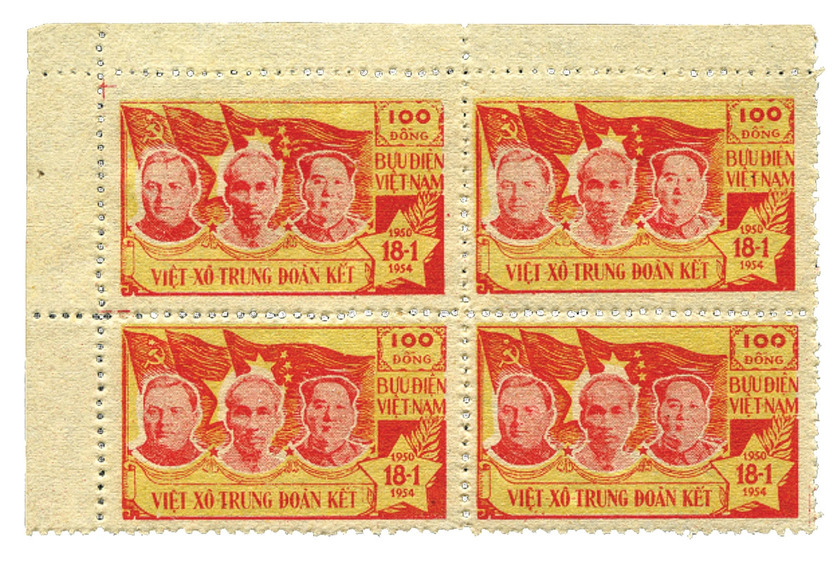
Later, stamps were gradually printed using lithography, a printing method in which designs were drawn onto a flat stone or smooth metal plate.
The cultural values and historical cultural depth of each stamp have attracted, conquered, stimulated the curiosity and desire to learn and explore of many people. The sparkling beauty of the colors, sometimes brilliant and splendid, sometimes deep and calm, the lines sometimes strong, sometimes leisurely, and the magical world of the stamps seem to have a magical attraction of the invisible world that makes players unable to leave, even more difficult to give up. The profound, vast world of stamps has created a holy and useful passion.

Vietnamese cultural identity on postage stamps
A collector said, unlike playing with cars, knowing cars, playing with paintings, playing with stamps can learn about culture, society, history of the country, national treasures, environment, nature... Not simply searching, increasing the number of samples, number of stamp sets, the collector also has to orient the topic; arrange the separate stamps into stories; layout, presentation; annotation, explanation... With just the theme of roses, some people can arrange a huge chain of information from evolutionary history; structure, cultivation; life value; spiritual value... of roses. Going beyond the limits of the stamp's teeth, each stamp is like a miniature painting, wrapping from massive architectural works, to small insects, stories about the environment, history, natural life and people... to chat, send to the next generation many messages of life. Playing with stamps is also a way to cultivate personal knowledge to "read" the past of the whole world.
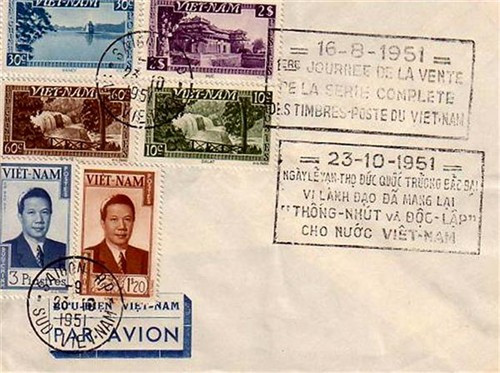
Historical events and figures are recreated on "small-sized paintings"
Stamps are a messenger that knows no borders and has its own voice. Stamps become a special document of each nation, marking important milestones and events. Stamps are also affectionately called “stamp wings”, the blue birds of Vietnam – cultural messengers flying to the ends of the earth, introducing Vietnamese culture to the world.

Vietnamese postage stamps have contributed significantly to the process of affirming the national cultural identity. Therefore, today, despite the presence of many modern means of communication and information, postage stamps still play an important role in human life. Stamps continue to be cherished in the love of stamp collectors around the world. A stamp truly lives when it is operated, fulfilling its noble mission, and spreading its wings to many places. That is perhaps the strong vitality of each stamp through time and space.






